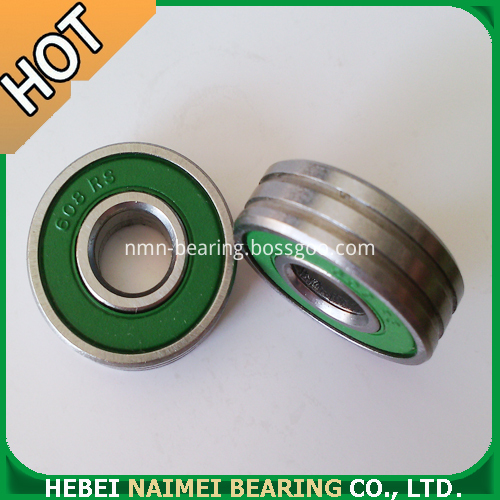The multimeter is also known as a multimeter, a multipurpose meter, and a multiplex table. The multimeter is divided into an analog multimeter and a digital multimeter. Is a multi-function, multi-range measuring instrument, general multimeter can measure DC current, DC voltage, AC current, AC voltage, resistance and audio level, and some can also measure AC current, capacitance, inductance and semiconductor Some parameters.
The pointer multimeter is an average type meter with an intuitive, visual indication of reading. (General readings are closely related to the pointer's swing angle, so it is intuitive).
Digital multimeters are instantaneous take-out style meters. It takes 0.3 seconds to take a sample to display the measurement results. Sometimes the sampling results are very similar and not exactly the same. This is not as convenient as reading the results.
The pointer multimeter generally has no amplifier inside, so the internal resistance is small, such as the MF-10 type, and the DC voltage sensitivity is 100 kΩ/V. The MF-500 has a DC voltage sensitivity of 20 kOhms/volt.
Digital multimeters use internal op amp circuits. Internal resistance can be very large, often in 1M or more. (ie, higher sensitivity can be achieved). This makes the impact on the circuit under test smaller and the measurement accuracy higher.
Analog multimeter due to smaller internal resistance, and the use of discrete components to form a shunt voltage divider circuit. Therefore, the frequency characteristics are non-uniform (relative to digital), and the analog multimeter has relatively good frequency characteristics. The pointer multimeter has a simple internal structure, so it has lower cost, less functions, simple maintenance, and strong over-current and over-voltage capability.
Digital multimeter uses a variety of internal oscillation, amplification, frequency division protection circuit, so the function is more. For example, temperature, frequency (in a lower range), capacitance, inductance, signal generator, etc. can be measured.
Digital multimeters have poor overload capability due to their multiple internal circuits using integrated circuits (though some of them have been able to automatically shift gears and protect them automatically, but they are more complicated to use), and are generally not easily repaired after damage.
Analog multimeter output voltage is higher, (with 10.5 volts, 12 volts, etc.). The current is also large (such as the MF-500 * 1 European file has a maximum of about 100 mA) can easily test thyristors, light-emitting diodes and so on.
The digital multimeter output voltage is low (usually no more than 1 volt). It is inconvenient to test some special voltage components (such as thyristors, light emitting diodes, etc.).
The pointer multimeter is an average type meter with an intuitive, visual indication of reading. (General readings are closely related to the pointer's swing angle, so it is intuitive).
Digital multimeters are instantaneous take-out style meters. It takes 0.3 seconds to take a sample to display the measurement results. Sometimes the sampling results are very similar and not exactly the same. This is not as convenient as reading the results.
The pointer multimeter generally has no amplifier inside, so the internal resistance is small, such as the MF-10 type, and the DC voltage sensitivity is 100 kΩ/V. The MF-500 has a DC voltage sensitivity of 20 kOhms/volt.
Digital multimeters use internal op amp circuits. Internal resistance can be very large, often in 1M or more. (ie, higher sensitivity can be achieved). This makes the impact on the circuit under test smaller and the measurement accuracy higher.
Analog multimeter due to smaller internal resistance, and the use of discrete components to form a shunt voltage divider circuit. Therefore, the frequency characteristics are non-uniform (relative to digital), and the analog multimeter has relatively good frequency characteristics. The pointer multimeter has a simple internal structure, so it has lower cost, less functions, simple maintenance, and strong over-current and over-voltage capability.
Digital multimeter uses a variety of internal oscillation, amplification, frequency division protection circuit, so the function is more. For example, temperature, frequency (in a lower range), capacitance, inductance, signal generator, etc. can be measured.
Digital multimeters have poor overload capability due to their multiple internal circuits using integrated circuits (though some of them have been able to automatically shift gears and protect them automatically, but they are more complicated to use), and are generally not easily repaired after damage.
Analog multimeter output voltage is higher, (with 10.5 volts, 12 volts, etc.). The current is also large (such as the MF-500 * 1 European file has a maximum of about 100 mA) can easily test thyristors, light-emitting diodes and so on.
The digital multimeter output voltage is low (usually no more than 1 volt). It is inconvenient to test some special voltage components (such as thyristors, light emitting diodes, etc.).
Miniature Bearings:Grooved Ball Bearing - That is standard bearings with single or double deep groove outer ring(double slotted bearings), Hot sale bearings No 625ZZ ,626ZZ, 608ZZ(double grooved bearing 608) etc .
It is very popular for injection window roller or bathroom sliding roller easily.
- 1. Type: Grooved Ball Bearing
- 2. Brand Name: NMN or OEM , ect.
- 3. Bore Class 100; HRC 55.
- 4. Groove Depth: 0.5mm, this depth will make the plastic more well connected with the groove.
- 5. Outer Ring: Thickest ( this could make sure the outer ring won't be broken easily.
-
6. Cage: Steel,Brass,Nylon
- 7. Precision Rating: ABEC-1/ P0, ABEC-3/P6, ABEC-5/P5, ABEC-7/P4
- 8. Seals Type: open , 2RS , ZZ
- 9. Number of Row: Single Row , Double Row10. Material: Chrome steel, Stainless steel


Grooved Ball Bearing,Miniature Grooved Ball Bearing,Grooved Plastic Bearing,Slotted Mini Ball Bearing
Hebei Naimei Bearing Co., Ltd. , https://www.nmn-bearing.com